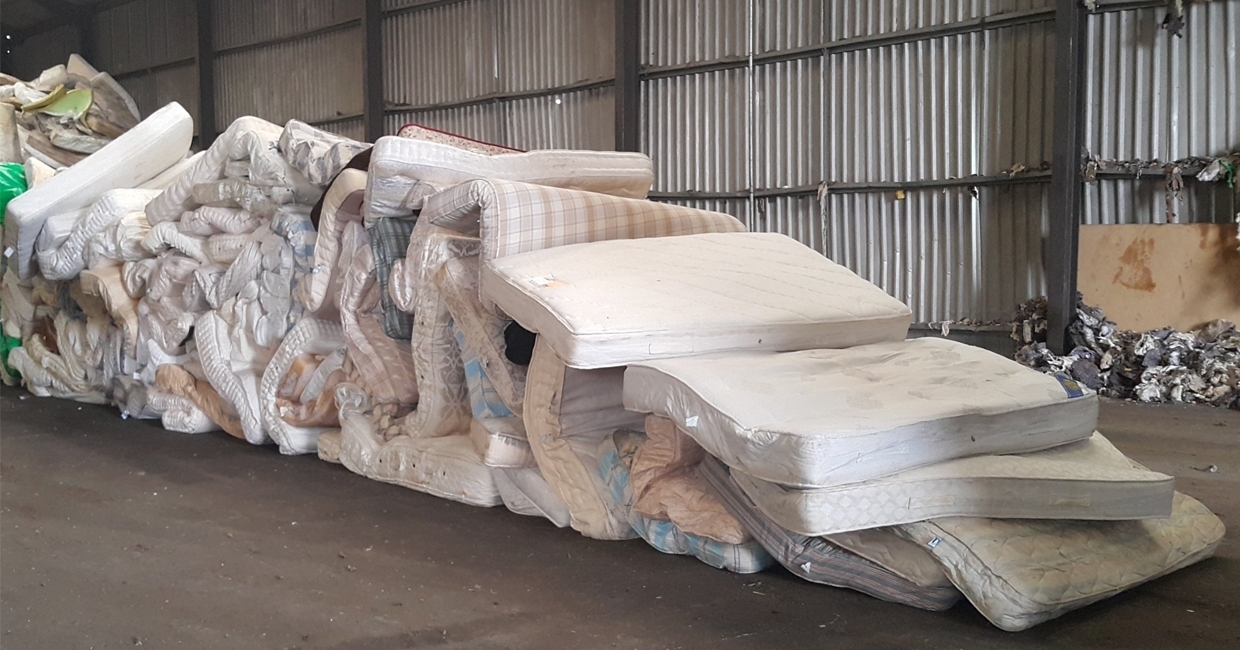The National Bed Federation’s (NBF’s) third report on the rate of mattress recycling in the UK has revealed a +55% increase in the number of mattresses being handled by recyclers between 2015-17, and evidence that this growth will continue in the near term.
The recycling rate, calculated as a percentage of new mattress replacement sales, has increased from 15% in 2016 to 19% in 2017.
Based on detailed analysis of published data plus surveys and interviews carried out with local authorities, manufacturers, retailers and recyclers, The 2019 End of Life (EoL) Mattress Report, aims to paint a picture of the number and type of mattresses there are in circulation across the UK and their end of life fates. It is produced on behalf of the NBF (the trade association representing UK and Irish bed manufacturers and their component suppliers) by environmental consultant Oakdene Hollins.
The report estimates that 7.26 million/181,500t of mattresses were disposed of by households, businesses and service providers in 2017 at a cost of over £20m, excluding transport and handling – 91% of all new mattress sales.
Of these, 19% - 1.363 million/32,3271t - were diverted from landfill to mattress recycling businesses. This is 55% higher than the 879,000 estimated for 2015. The rest went into landfill (40%) or energy from waste (41%). Figures were not fully available at the time, but the prediction is that the recycling rate for 2018 will have increased to 20-22%, with mattress recyclers reporting that their throughput in 2018 was +29% higher than in 2017.
Although changes in methodology do not allow for exact comparisons, it would appear that manufacturers, retailers and other businesses have increased their mattress recycling significantly since the previous survey. This wider provision of privately-run take back schemes has more than counteracted the -14% drop in the tonnage of mattresses being segregated and recycled by local authorities - they now account for only 46% by weight of the mattresses recycled in 2017 (55% of units). Wales, Northern Ireland and London record the best local authority recycling rates per head of population – Scotland and Eastern England the lowest.
According to the NBF, mattresses are generally recognised as a problematic and costly waste stream because of their weight, bulkiness, low reuse potential and low value of the materials that can be recovered from them. Nevertheless, market forces are driving improved segregated collection and recycling rates.
There has been explosive growth in the mattress recycling sector in the last few years, with new companies being established and existing ones expanding. As it matures, the level of professionalism in the sector appears to have much improved, probably due to customer expectations and a recognition of the importance of trust and visibility to building long-term relationships with customers. The imminent launch of the Register of Approved Mattress Recyclers (RAMR) scheme, being developed by a stakeholder panel including the NBF and the Textile Recycling Association, will be another milestone in that journey.
However, there are still geographical gaps, with many areas of the UK not covered by a local recycler and transport/logistic and economies of scale barriers to overcome. The report describes the recycling technologies used by these recyclers, ranging from manual and semi-automated deconstruction to shredding, and the end fates of the materials recovered. Most avoid landfill altogether, with around 20-25% of materials by weight going to RDF (Refuse Derived Fuel) production. An increase in mattress and component reuse was also noted – a move which the NBF cautiously supports, as long as there is clear labelling to indicate this at the point of sale.
The report concludes that while the mattress recycling sector appears to be commercially viable at the scale it is now, at the current rate, it would take another 50 years to reach a 100% mattress recycling rate.
“It is gratifying to see this organic increase in the rate of mattresses being diverted from landfill but we still have a lot to do if we are going to meet the NBF’s ambitious target of 75% diversion from landfill by 2028 through a combination of mattress recycling with Energy from Waste (EfW),” says NBF president Tony Lisanti.
“The NBF is already working on many of the report’s recommendations for improving the rate and fate of mattresses at the end of their useful life as well as reducing the impact of our production on the resources of our planet. We must all accept shared responsibility, build mutual trust and work together proactively to achieve these goals.”
The full report can be accessed here.











